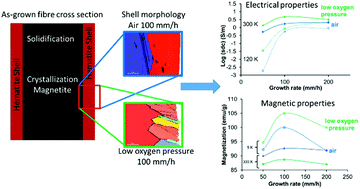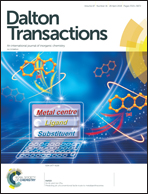Unusual redox behaviour of the magnetite/hematite core–shell structures processed by the laser floating zone method
Abstract
Magnetite (Fe3O4) offers unique physical and chemical properties, being an important material for many industrial applications. Certain limitations on the application conditions are, however, imposed by the redox stability issue. Fine control of the iron oxidation states represents a challenge for materials engineering. The present work explores relevant redox processes in iron oxides, processed under highly non-equilibrium laser floating zone (LFZ) conditions under atmospheres with different oxygen activities. The as-grown fibres showed a structure composed of the Fe3O4 core and the Fe2O3 shell. This study uncovers unexpectedly lower hematite content and shell thickness for the fibres processed under more oxidizing conditions. Combined structural and microstructural studies, supported by the analysis of the existing literature data, strongly suggest that the redox processes during the LFZ process can be rather determined by kinetics of melt crystallization, nuclei formation and heat transfer than by the oxygen content in the gas phase. The proposed mechanisms are further confirmed by electrical and magnetic studies of the composite fibres.



 Please wait while we load your content...
Please wait while we load your content...